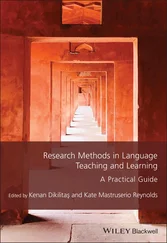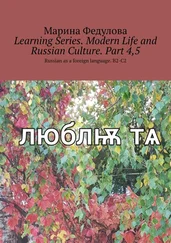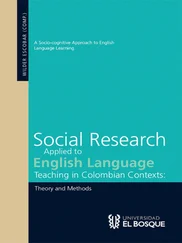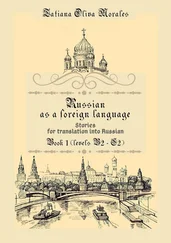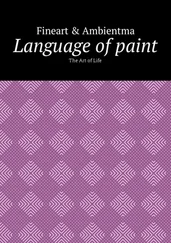In many respects, Dewey’s understanding of the nature and significance of artistic experience can be considered the keystone of his educational writings.92 He continually drew parallels between teaching and artistic expression. At the same time, he makes clear that this concept of teaching also requires a fully new understanding and vision of education than that which was prevalent in his times:
It is by way of communication that art becomes the incomparable organ of instruction, but the way is so remote from that usually associated with the idea of education, it is a way that lifts art so far above what we are accustomed to think of as instruction, that we are repelled by any suggestion of teaching and learning in connection with art. But our revolt is in fact a reflection upon education that proceeds by methods so literal as to exclude the imagination and one not touching the desires and emotions of men.93
Of particular relevance in regard to his view of teaching was the emphasis which he placed on the development of the imaginative faculties of pupils and teachers. Developing empathetic and imaginative capabilities through artistic experience is seen as a decisive mode of learning. This is equally true for teacher and pupil. Such experiences have their most profound effects, not in the visible results of a particular activity, but in their long-term transformative and motivational consequences. At the end of Art and Experience Dewey writes,
Imagination is the chief instrument of the good. It is more or less a commonplace to say that a person’s ideas and treatment of his fellows are dependent upon his power to put himself imaginatively in their place. But the primacy of the imagination extends far beyond the scope of direct personal relations. (…) While perception of the union of the possible with the actual in a work of art is itself a great good, the good does not terminate with the immediate and particular occasion in which it is had. The union that is presented in perception persists in the remaking of impulsion and thought. The first intimations of wide and large redirections of desire and purpose are of necessity imaginative.94
Not only have Dewey’s ideas regarding art and experience had a significant influence on the thinking of a number of later educators, but his attempts to develop an educational science based on using scientific methods in an artistic manner also demonstrated the first pragmatic possibilities of mediating between what had been perceived as irrevocable polarities of thinking.95
1.3.2 The Teacher as Researcher – Lawrence Stenhouse
The most significant contribution to the concept of teaching as an art to come out of Great Britain is connected to the influential work and writings of Lawrence Stenhouse (1926–1982). Stenhouse’s name and work are inextricably tied to the idea of the ‘teacher as researcher’ or, ‘action research’ which he pioneered in England. His concept had a twofold basis: first, he proposed that it was through consciously monitoring and researching their own work that teachers could become conscious artists:
A teacher lays the foundation of his capacity for research by developing self-monitoring strategies. The effect is not unlike that of making the transition from amateur to professional actor. Through self-monitoring the teacher becomes a conscious artist. Through conscious art he is able to use himself as an instrument of his research.96
Secondly, he argued that it was research conducted by teachers that would lead to the most significant improvements in teaching and curricula:
The assertion is that the improvement of teaching rests upon the development of the art of the teacher and not through the teacher’s adoption of uniform procedures selected from competing alternatives.97
Stenhouse’s concept of the ‘teacher as researcher’ hinges on the teacher’s adopting the attitude of the researcher, testing hypotheses in action, recognizing the provisional nature of results and continually willing to revise them. For him, this is an essential aspect of what constitutes artistry in teaching:
…for the most part neither teachers nor pupils recognize teaching as an art. Hence teachers do not see their own development as key to the situation in the same way as actors or sculptors or musicians do. And pupils do not understand – nor do teachers generally share the understanding with them – the significance of experiment in the classroom and their role in it.98
In the development of this attitude and in learning to adopt such methods, a teacher makes crucial steps in attaining artistry. Stenhouse considers this to be vital for the teacher’s self-development. The process through which this occurs evidences significant parallels to the learning and practice of any form of art:
I am claiming that the expression of educational ideas in curricular form provides a medium for the development – and if necessary the autonomous self-development – of the teacher as artist. To say that teaching is an art does not imply that teachers are born, not made. On the contrary artists learn and work extraordinarily hard at it. But they learn through the critical practice of their art. Idea and action are fused in practice. (…) Thus in art ideas are tested in form by practice. Exploration and interpretation lead to revision and adjustment of idea and of practice. If my words are inadequate, look at the sketchbook of a good artist, a play in rehearsal, a jazz quartet working together. That I am arguing, is what good teaching is like. It is not like routine engineering or routine management.99
It is in the fundamental connection which Stenhouse sees between the teacher’s development as an artist and the further development of educational curricula, that his standpoint has its most wide-ranging implications for the entire field of education. In this context, a substantially different view of in-service training is advanced:
My position is that in-service development must be the development of the teacher as artist. That means the development of understanding expressed in performance: understanding of the nature of knowledge expressed in the art form of teaching and learning. No skills unless they enhance understanding, no curriculum study unless it enhances understanding, no courses of study unless they enhance understanding, no assessment unless it enhances understanding. What I am advocating is so radical that I may not be communicating it. Let me sharpen the message in the area of curriculum: I am saying that the purpose of any curriculum change, any curriculum research, any curriculum development is the enhancement of the art of teaching, of understanding expressed as performance.100
The underlying motive going through all his works is his vision of teaching conducted in the spirit of inquiry. All worthwhile developments in curriculum and theory hinge on the teacher’s willingness to engage in this process and to offer the fruits of his research to others for further testing and evaluation. In this respect, curriculum is considered as a hypothesis to be tested in the classroom. For him, the teacher’s acceptance of responsibility for curriculum development and her learning of the requisite research skills, are predicated on her own desires to institute fundamental changes:
As a starting-point teachers must want change, rather than others wanting to change them. That means that the option of professional development leading towards professional satisfaction of a kind that brings an enhancement of self must be made clear and open to teachers.
Teachers have been taught that teaching is instrumental but improving education is not about improving teaching as a delivery system. Crucial is the desire of the artist to improve his art. This art is what the experienced teacher brings to in-service development. Good in-service education recognizes and strengthens the power and primacy of that art. It offers curricula to teachers as music in-service offers Beethoven or Stravinsky to musicians – to further the art. In-service is linked to change because art is about change and only develops in change.101
Читать дальше

